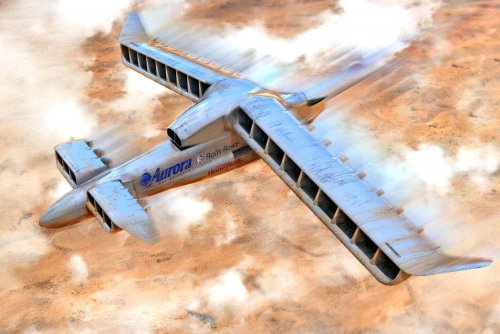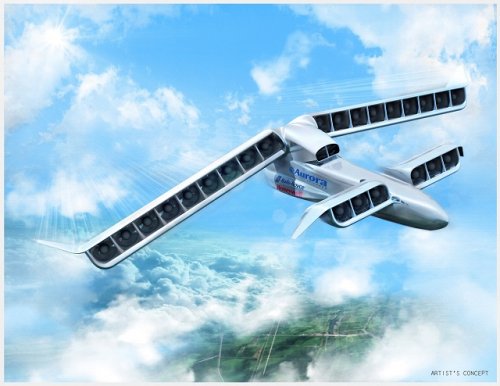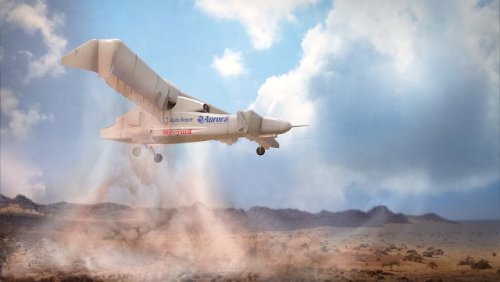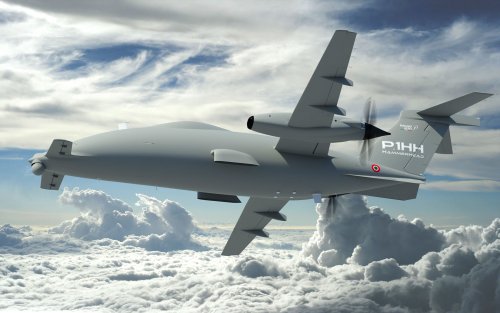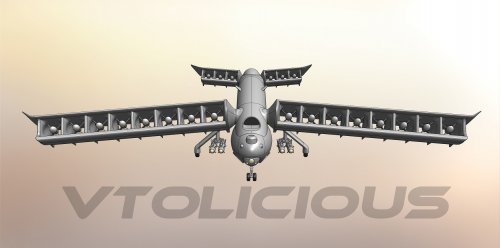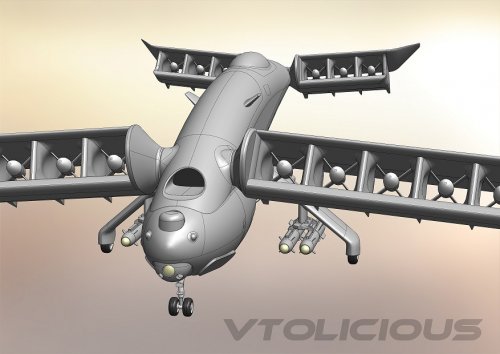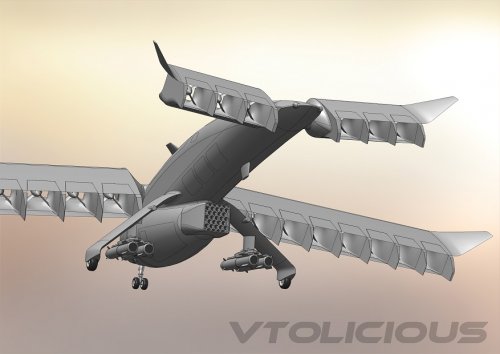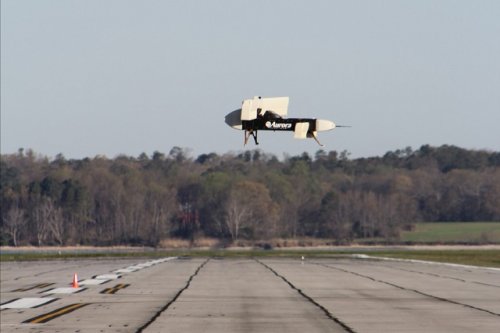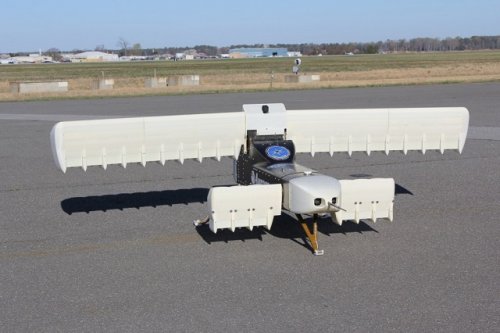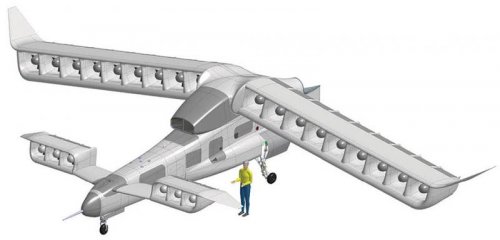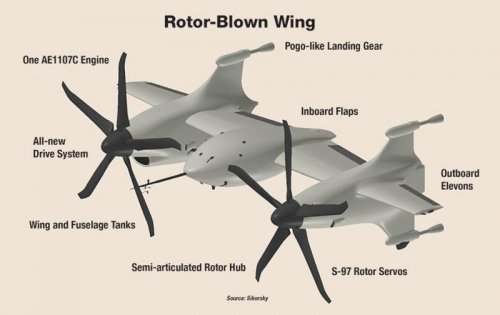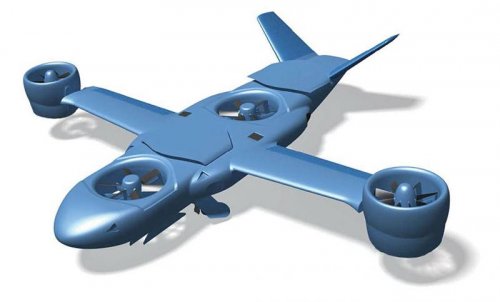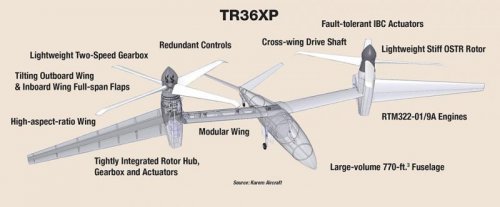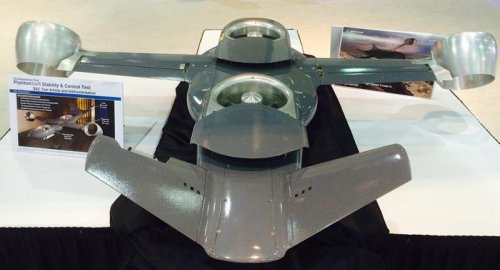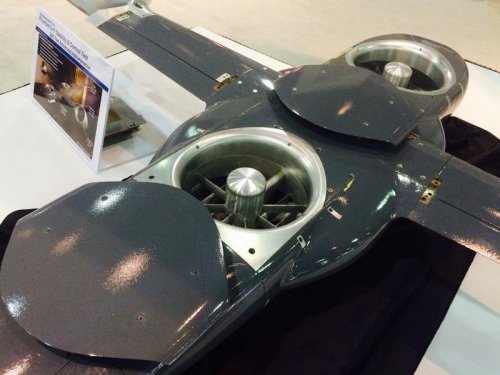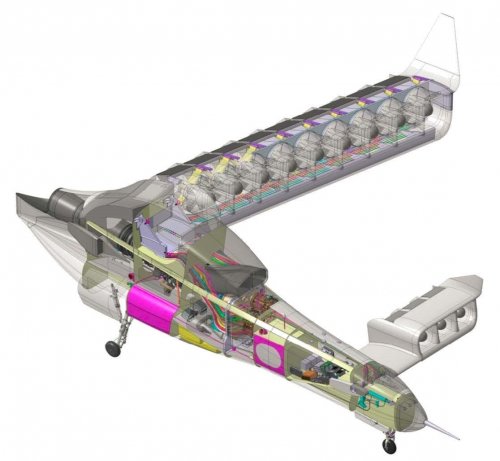- Joined
- 24 November 2008
- Messages
- 1,327
- Reaction score
- 1,655
The Next X-Plane
By Richard Whittle, Air & Space Magazine, October 2015
http://www.airspacemag.com/flight-today/15_on2015-x-plane-vtol-dream-machine-180956609/?no-ist
Most interesting, first pic and description of Aurora's Lightning Strike!
John Langford’s company is developing the most unconventional entry: a hybrid electric tilt-wing aircraft using an avant-garde form of thrust called distributed electric propulsion, something NASA is also experimenting with. The thrust for LightningStrike, as Aurora calls its design, will be produced by 24 ducted fans, 18 embedded in the tilting wing and another six in a tilting canard. The fans are to be driven by three megawatts of electricity, equivalent to 4,023 horsepower, produced by three generators powered by a single Rolls-Royce AE 1107 turbine engine, the one used on the V-22 Osprey. No batteries required.
“It is a strange-looking airplane,” Langford allows, but “one of the things distributed electric propulsion gives you is this incredible freedom to integrate the aerodynamics and propulsion together.” The amount of power sent to each of the 18 wing fans (31 inches in diameter), and to the canard fans (21 inches in diameter), can be varied according to complex algorithms executed by triply redundant flight control computers. “There’s essentially a nozzle at the back of each of these, and you can change the thrust of each of these individually, so you can change the lift distribution and you can get very powerful controls,” Langford says. The configuration, he adds, “allows you to operate each piece of that wing at its maximum performance condition throughout the hover and the transition and the forward flight regime,” so you avoid losing lift because, say, a rotor is blowing down on the wing.
For the VXP competition, the LightningStrike is unmanned and fully autonomous; no remote control pilot, as is used with the Predator and many other unmanned aircraft. But add a cockpit and the LightningStrike can be manned. It can also accommodate a cabin between the wing and canard, able to carry six troops or passengers. Langford adds that the design can be easily scaled up or down; the individual lift fans “almost become like Legos. You can add or subtract them.”
Unlike the other entrants, Aurora built a one-fifth-scale model demonstrator—made largely with 3D printing—and as of press time planned test flights in September at Naval Air Station Patuxent River, Maryland, to validate data collected in wind tunnel tests. The LightningStrike will be “as maneuverable and agile as a helicopter, certainly,” says Carl Schaefer, Aurora’s program manager, “but I think where you’ll see it most maneuverable and agile is in its forward flight regime. It’s got tremendous roll rates, very good pitch rates. It’s a sports car, frankly.”
 Three Megawatts!
Three Megawatts!
I wonder if these ducted fans can be operated efficiently at hover and high speed (up to 350kt?). Assumeing they are fixed pitch and thrust is controlled by a mix of speedcontrol and the variable nozzles.
BR Michael
By Richard Whittle, Air & Space Magazine, October 2015
http://www.airspacemag.com/flight-today/15_on2015-x-plane-vtol-dream-machine-180956609/?no-ist
Most interesting, first pic and description of Aurora's Lightning Strike!
John Langford’s company is developing the most unconventional entry: a hybrid electric tilt-wing aircraft using an avant-garde form of thrust called distributed electric propulsion, something NASA is also experimenting with. The thrust for LightningStrike, as Aurora calls its design, will be produced by 24 ducted fans, 18 embedded in the tilting wing and another six in a tilting canard. The fans are to be driven by three megawatts of electricity, equivalent to 4,023 horsepower, produced by three generators powered by a single Rolls-Royce AE 1107 turbine engine, the one used on the V-22 Osprey. No batteries required.
“It is a strange-looking airplane,” Langford allows, but “one of the things distributed electric propulsion gives you is this incredible freedom to integrate the aerodynamics and propulsion together.” The amount of power sent to each of the 18 wing fans (31 inches in diameter), and to the canard fans (21 inches in diameter), can be varied according to complex algorithms executed by triply redundant flight control computers. “There’s essentially a nozzle at the back of each of these, and you can change the thrust of each of these individually, so you can change the lift distribution and you can get very powerful controls,” Langford says. The configuration, he adds, “allows you to operate each piece of that wing at its maximum performance condition throughout the hover and the transition and the forward flight regime,” so you avoid losing lift because, say, a rotor is blowing down on the wing.
For the VXP competition, the LightningStrike is unmanned and fully autonomous; no remote control pilot, as is used with the Predator and many other unmanned aircraft. But add a cockpit and the LightningStrike can be manned. It can also accommodate a cabin between the wing and canard, able to carry six troops or passengers. Langford adds that the design can be easily scaled up or down; the individual lift fans “almost become like Legos. You can add or subtract them.”
Unlike the other entrants, Aurora built a one-fifth-scale model demonstrator—made largely with 3D printing—and as of press time planned test flights in September at Naval Air Station Patuxent River, Maryland, to validate data collected in wind tunnel tests. The LightningStrike will be “as maneuverable and agile as a helicopter, certainly,” says Carl Schaefer, Aurora’s program manager, “but I think where you’ll see it most maneuverable and agile is in its forward flight regime. It’s got tremendous roll rates, very good pitch rates. It’s a sports car, frankly.”
I wonder if these ducted fans can be operated efficiently at hover and high speed (up to 350kt?). Assumeing they are fixed pitch and thrust is controlled by a mix of speedcontrol and the variable nozzles.
BR Michael

